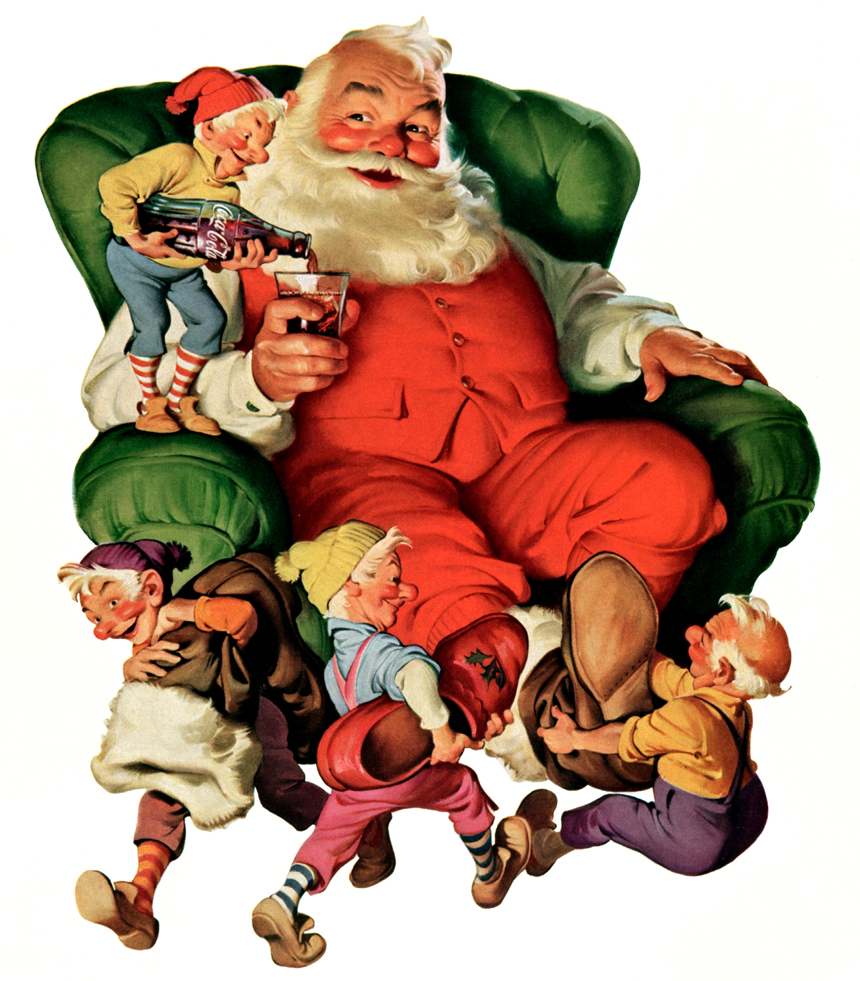He's fat, he's jolly, he says "Ho, ho, ho," drives a sleigh and delivers presents chimney to chimney. But who is he really, and where did he come from before he took up his mythical residence at the North Pole? The Santa Claus character is based on a Roman Catholic bishop, St. Nicholas, the patron saint of children, who was known for his generosity and reputed to have left gifts for children, said Dr. Foster Eich, a retired pediatrician in Florence and author of "The True Story of St. Nicholas, who is also called Santa Claus" (available at Episcopal Book Store for $15.95).
Eich, also an Episcopal priest who serves as priest associate at St. Bartholomew's Episcopal Church in Florence, took up the hobby of researching St. Nicholas about 25 years ago.
"This is what we should tell children about Santa Claus,"
Eich said. "He was bishop of Myra, in what's eastern Turkey, then the Greek-speaking Roman Empire. He was born in 280 A.D." The name "Claus" derived as a corruption in pronunciation of the name, "Nicholas," Eich said. "Children had a lot of problem saying St. Nicholas," Eich said. "St. Nicholas is a little hard to say. Children started simplifying it to Santa Claus."
The feast day of St. Nicholas, Dec. 6, was celebrated by the Dutch as a gift-giving day when children put out their shoes to be filled with goodies by St. Nick, who had evolved into a mystical gift-giver with a white beard.
The Calvinist Protestants of northern Germany moved the gift-giving to Christmas and dressed St. Nick in fur instead of bishop's robes. The customs began to emigrate to America in the 1600s.
"Dutch children brought the custom to America," Eich said. In Holland to this day gifts are given Dec. 6.
St. Nicholas underwent an image changeover that got its biggest boost from a poem by the biblical scholar Clement Moore, who taught in Episcopal seminaries. Moore's 1822 poem, "A Visit from St. Nicholas," set the tone for the modern Santa story.
"The image, the picture of him we have is from Clement Moore," Eich said. "He had a man working on his farm who was Dutch. The description fits his farmhand. Moore rode down in a sleigh to pick up some things and on the way home he thought up the poem.
The poem is called, 'A Visit from St. Nicholas.' Nowhwere in it does Moore call him Santa Claus. Clearly, we are talking about the same person."
In the 1860s, cartoonist Thomas Nast refined the image of Santa Claus, and in the 1930s Coca-Cola advertising cartoonist Haddon Sundblom helped complete the evolution into a jolly, oversized elf with a kindly face.
Gradually, the religious image was fully transformed into a secular icon. St. Nicholas of Myra was represented in medieval art holding four loaves of bread as a symbol of his generosity.
While archbishop of Lycia, Nicholas was supposed to have helped avert a food shortage by persuading several ships traveling from Constantinople to Alexandria to leave a year's supply of grain when they sought refuge in the harbor of Myra during a storm.
According to legend, he told the ship captains their hoppers would still be full of grain when they reached port, and the prediction proved true. The bishop's persuasion saved many from starvation, so the story goes.
Nicholas may have been infused with some of the magical traits of the Norse god with the flowing beard, called Odin or Woden, who galloped through the air on his eight-legged horse.
Reliable historical information about the real St. Nicholas is hard to come by. St. Nicholas was supposed to have been imprisoned and released at the Council of Nicaea, but no record exists of him taking part in that meeting.
"He is not on the records of the Council," Eich said. "That may be because according to the story, he slapped Arias over his heresy and got kicked out."
No written records of Nicholas exist except those dating 200 years after his death. In medieval times, all sorts of legends sprang up surrounding St. Nicholas.
The most famous one is of the man who couldn't afford to pay the dowry for his three daughters to be married. "In those days a girl had to have a certain amount of money to get married," Eich said. "They might have to be sold into slavery into order to have food." Nicholas sneaks in at night and leaves the dowry so the young women can get married. "He tossed bags of gold in their stockings or shoes," Eich said. "I think the story of the three girls is true. It's a very credible story.
"Even as recently as the early 1960s in Europe, the great celebration and the day of gift-giving was Jan. 6, Epiphany, a commemoration of the Magi bringing gifts to Jesus.
The 12-day season of Christmas runs from Dec. 25 to Epiphany. The Americanization of Europe has gradually overshadowed Epiphany with an American-style Christmas.
"I'm reclaiming him as a Christian symbol," Eich said.

No comments:
Post a Comment